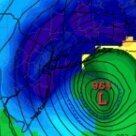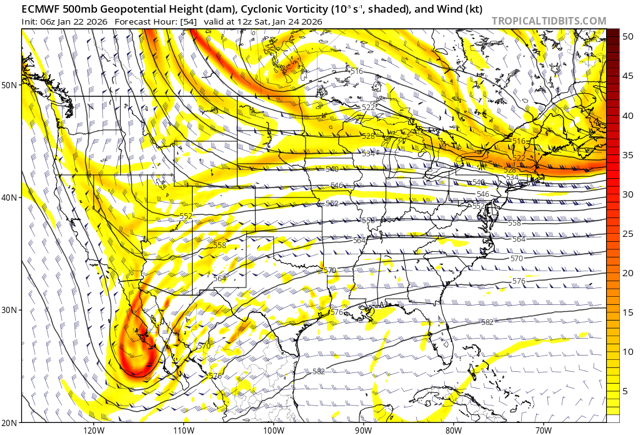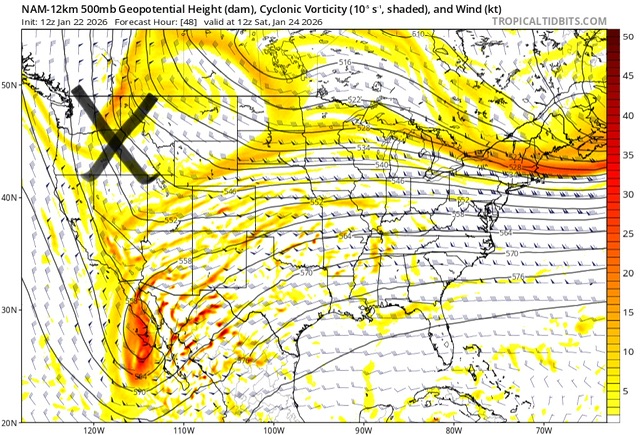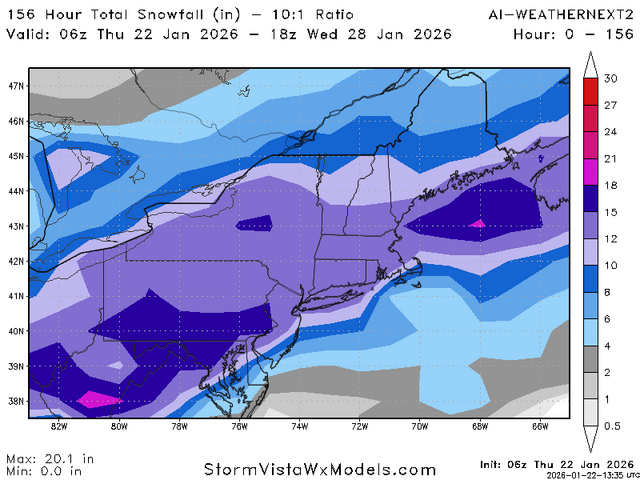All Activity
- Past hour
-
That’s not far off the UK .
-

January 24-26: Miracle or Mirage JV/Banter Thread!
SnowenOutThere replied to SnowenOutThere's topic in Mid Atlantic
I don't know! I just got here. Though I think they do better when it comes to freezing rain and surface cold air but this setup to my knowledge is all based on 850-700mb warm layers which should torch faster the further south. I'm just worried that I end up with a major ice storm of freezing rain. -
It has more of a “doing things that don’t make sense” bias. And it only gets worse the longer it runs.
-
NAM juicing things up in central TX/AR at 54 comparatively to 6z run.
-

January 24-26: Miracle or Mirage JV/Banter Thread!
paulythegun replied to SnowenOutThere's topic in Mid Atlantic
-
For reference concerning snow-liquid ratios with storms that had 1"-2" QPF, as currently shown on the NBM: So, assuming a ratio of 11:1-13:1 during the height of the storm (0.50"-0.75" QPF), NYC seems in very good shape to see at least 6" of snow and well-positioned for even higher amounts, even if sleet mixes in or a transition to sleet occurs. This storm remains on track to be the biggest storm New York City has seen in nearly 4-5 years.
-
Its mainly click bait, In no way i would go out of the gate with the upper end of the potential scale.
-

“Cory’s in LA! Let’s MECS!” Jan. 24-26 Disco
Damage In Tolland replied to TheSnowman's topic in New England
Will arrows be used? -

“Cory’s in LA! Let’s MECS!” Jan. 24-26 Disco
Damage In Tolland replied to TheSnowman's topic in New England
But did that much really fall if it’s not OTG? -

January 24-26: Miracle or Mirage JV/Banter Thread!
MacChump replied to SnowenOutThere's topic in Mid Atlantic
Agreed. I'd want at least a couple of inches of snow under the layer of ice, otherwise you have no chance of getting it clear...it will be a nightmare regardless...i'll probably just wait for it to end tho... -
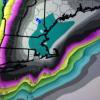
“Cory’s in LA! Let’s MECS!” Jan. 24-26 Disco
40/70 Benchmark replied to TheSnowman's topic in New England
Got my ranges...just need to get the time to draw everything up. -
If I recall. Doesn't Nam have a warm bias and an over amped bias?
-
-
Any Miller B storm can be tricky, let alone a weaker system. There could be some wrinkles yet to come.
-

January 25/26 Jimbo Back Surgery Storm
Upstate Tiger replied to Jimbo!'s topic in Southeastern States
NAM with precip on NC's doorstep at 15Z Saturday. That's faster onset. -
Atari 2600 lol
-
Subtle yet potentially impactful changes out to 48 when weighing anything between sleet vs freezing rain. Heights slightly lower and HP also about 2 mb stronger.
-

January 25/26 Jimbo Back Surgery Storm
StoneColdWeatherAustin replied to Jimbo!'s topic in Southeastern States
For sure. The kicker to that is multiple globals were showing big snow for a big chunk of NC within the 72 hour window. If I remember correctly, that was Tuesday 18z, and at that time the start of the precip was roughly Friday evening or overnight at the latest. It was the 0z models a few hours later that started the real warning signs. I know it sucks for the TV people. They know all this info is shared across social media so they have to keep people in check while at the same time having no idea what the actual outcome will be until closer to 24-48 hours. -

January 24-26: Miracle or Mirage JV/Banter Thread!
Scraff replied to SnowenOutThere's topic in Mid Atlantic
Really would love too, but today is my beer selling day in Moco. One day soon we’ll catch up though. Promise. -

“Cory’s in LA! Let’s MECS!” Jan. 24-26 Disco
40/70 Benchmark replied to TheSnowman's topic in New England
It's laziness and sensationalism all tied into one terd. -
Commodore 64.
-
Cue the Ralph Wiggum NAM GIF lol
-

2025-2026 Fall/Winter Mountain Thread
cold air aloft replied to Buckethead's topic in Southeastern States
I can tell you how this will play out where I am. It will be in the 20's with sleet/ZR in Buncombe County and rain with temps in the mid 40's IMBY with roaring SW winds a few hundred feet above me sounding like a 747. Having a warm nose take a way your winter storm is bad enough, but listening to it just adds to the misery lol. -

Pittsburgh/Western PA WINTER ‘25/‘26
Rd9108 replied to Burghblizz's topic in Upstate New York/Pennsylvania


